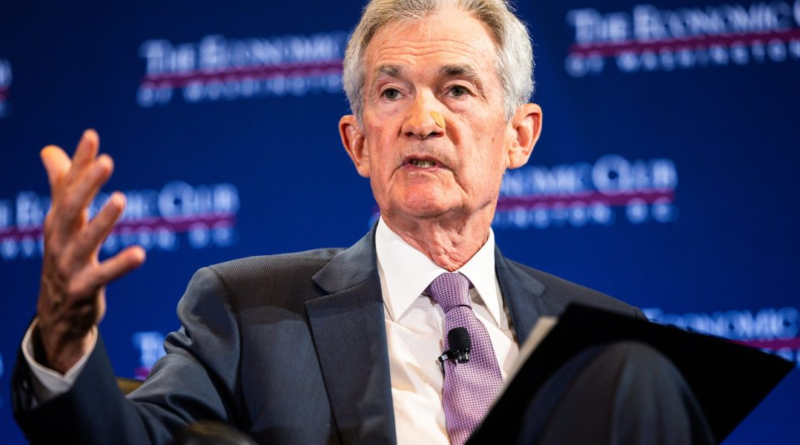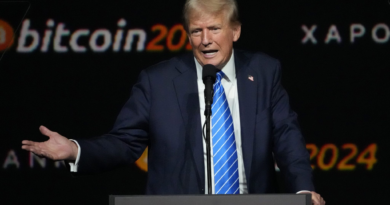Today’s Fed meeting is merely a warm-up act for September, according to Wall Street
Today Jerome Powell and his Fed committee kick off a two-day meeting which might, in theory, mark the beginning of a long-awaited reduction in America’s base interest rate.
But unlike other Federal Open Market Committee (FOMC) meetings, Wall Street analysts are not waiting with bated breath to hear the outcome of today’s intense discussions.
Instead, they are hankering after clues about the future.
Many have firmly set their sights on a cut in September, and as a result are hoping the July meeting will reveal snippets of insights from FOMC members which bolster that view.
Speculation over when—and by how much—the Fed will cut the base rate is rife given the extraordinary balance the Fed has thus far maintained between fighting inflation and avoiding a recession.
On one side you have those who would have Powell and his peers cut rates before Q3. On the other are those who remain unconvinced the economy will have cooled sufficiently by September to justify a potentially inflationary cut.
The base rate currently sits at a more than two-decade high as the Fed wrestles down inflation after it peaked at 9.1% in June 2022. Powell was tasked with a “soft landing” for the U.S. economy—avoiding a plunge into recession without suffering further price surges amid huge fiscal stimulus from the Biden Administration and inflationary geopolitical factors, like the war in Ukraine.
The base rate—currently targeted between 5.25% and 5.5%—is so instrumental to the economy’s fortunes that former President Donald Trump decreed there should be no cut before the November elections.
That notion has already been brushed aside by Wall Street.
Among the most assured voices is UBS’s senior US economist Brian Rose, who wrote in a note seen by Fortune: “The market is now pricing in more than two 25-basis-point rate cuts by year-end, including a near-100% chance of a September cut.”
Devil in the detail
Over at Goldman Sachs analysts will be hanging on—quite literally—every word in the FOMC’s July statement.
A note seen by Fortune penned by Goldman’s chief U.S. economist David Mericle released yesterday reads: “We expect the FOMC to revise its statement to hint that it is closer to cutting at its July meeting.
“We expect the statement to say: 1) the unemployment rate has ‘risen slightly but remains low.’”
This will be a change from the FOMC’s June statement which said the unemployment rate has “remained low.”
Other tweaks Mericle is expecting will be a change from the FOMC’s previous statement that the economy has made “modest further progress toward the … 2% inflation objective.”
Instead, Mericle is waiting for the FOMC to drop the word “modest” in favor of the more assured “further progress” towards its 2% target.
A third tweak will likely be “the risks to the two sides of the mandate [employment and inflation goals] ‘are in’ (not ‘have moved toward’) better balance.” And finally, “the FOMC now needs only ‘somewhat’ greater confidence in the inflation outlook to cut,” he wrote.
This latter update would be a change from the June statement, which read: “The committee does not expect it will be appropriate to reduce the target range until it has gained greater confidence that inflation is moving sustainably toward 2%.”
The revised outlook Goldman is expecting in July bolsters its view of a cut a matter of months later, Mericle adds: “We continue to expect a first cut in September followed by quarterly cuts.
“We see the risks to the Fed path as tilted slightly to the downside of our baseline of quarterly cuts, though not quite as much as market pricing implies.”
A lot of data to come
Wharton’s Professor Jeremy Siegel agrees with the idea of a September cut, the Emeritus Professor of Finance at the University of Pennsylvania isn’t as confident as some analysts.
In his weekly commentary as senior economist to investment experts WisdomTree, Siegel wrote: “I anticipate Jerome Powell will indicate the potential for easing of monetary policies in September if the current economic trends continue.”
“He is unlikely to fully commit to this, as there’s a lot of data before that September meeting—but the Fed’s confidence in the inflation trajectory should have increased enough to start cutting rates.”
One factor experts will be watching are the jobless claims. While Siegel said claims have “stabilized”. Bill Dudley, former president of the Federal Reserve Bank of New York, points out claims are now within touching distance of breaching the Sahm Rule.
The Sahm Rule looks at two factors: the current three-month moving average of U.S. unemployment and the lowest three-month moving average of U.S. unemployment over the past year.
If the current average is higher than the lowest average by more than half a percentage point, the American economy is headed for a recession. In the Sahm Rule’s latest update for June 2024—with 0.50 percentage points as the benchmark not to cross—the figure stood at 0.43.
As a result, Dudley wrote for Bloomberg this week, he would like to see Powell cut rates at this week’s meeting instead of waiting until September when claims might have tipped higher.
But other data may come in hot enough to offset these concerns—and may even be strong enough to put Powell off a September cut.
Siegel notes the Personal Consumption Expenditure (PCE) Price Index “revealed a slight uptick on a year-over-year basis” and more widely, the annual rate of inflation remains at 3%—down to the lowest point this year but still well ahead of the 2% target.
“The market even started pricing in some probability of a 50-basis point cut, which I have alluded to in prior commentaries, but that will only occur if there is a sharp slowdown, and the jobless claims data doesn’t point to that now,” he added.


 This year in odd news: The weirdest headlines from the Houston area in 2022 – KPRC Click2Houston
This year in odd news: The weirdest headlines from the Houston area in 2022 – KPRC Click2Houston

